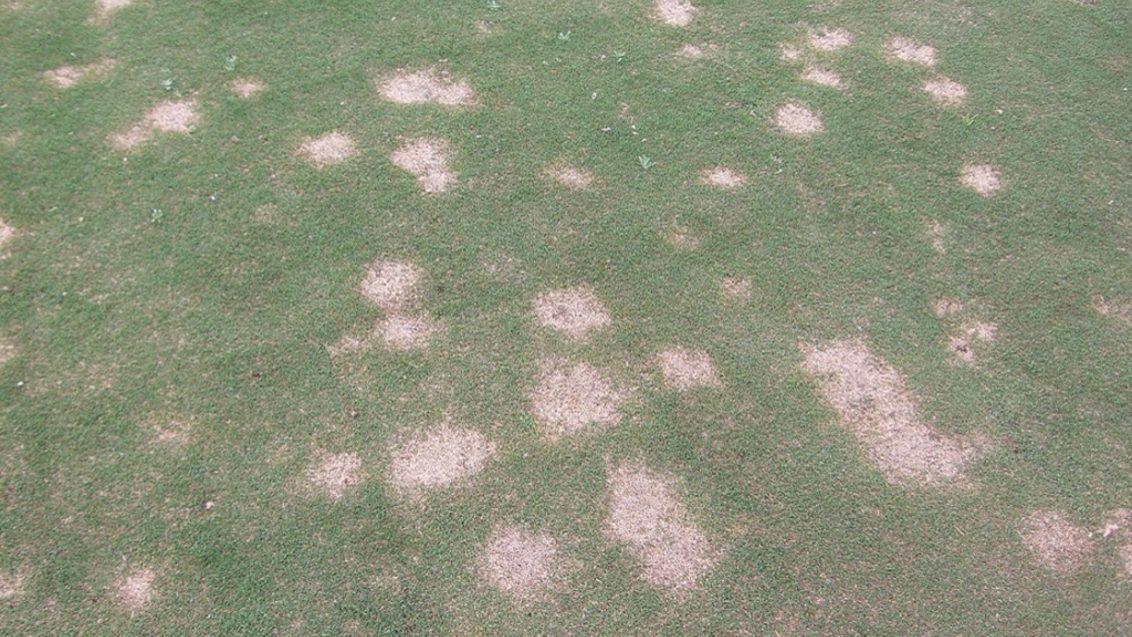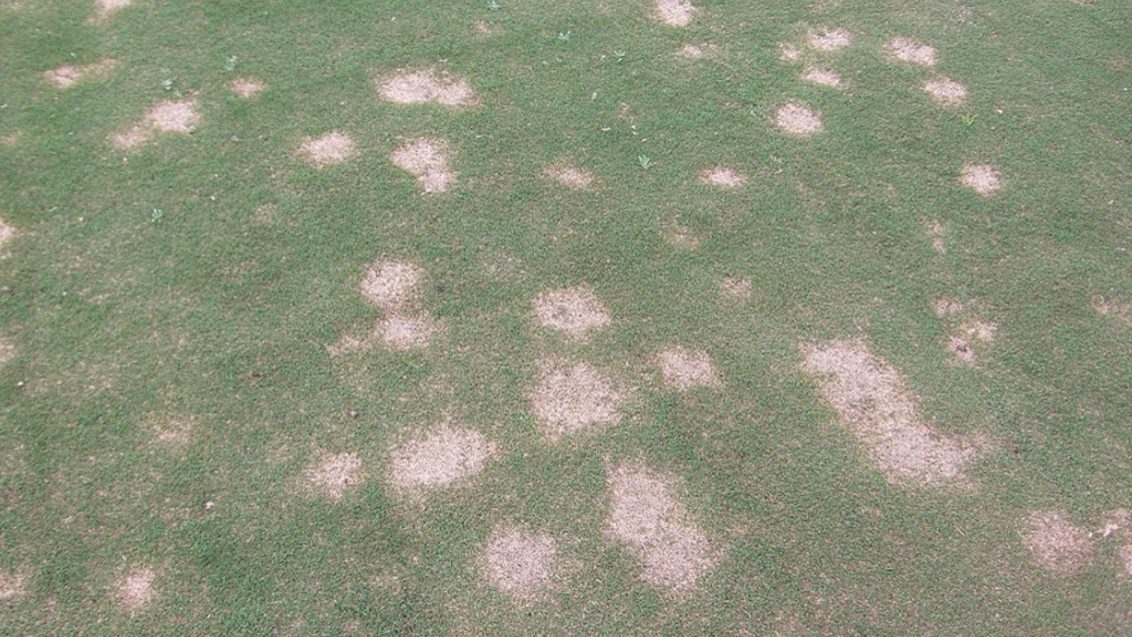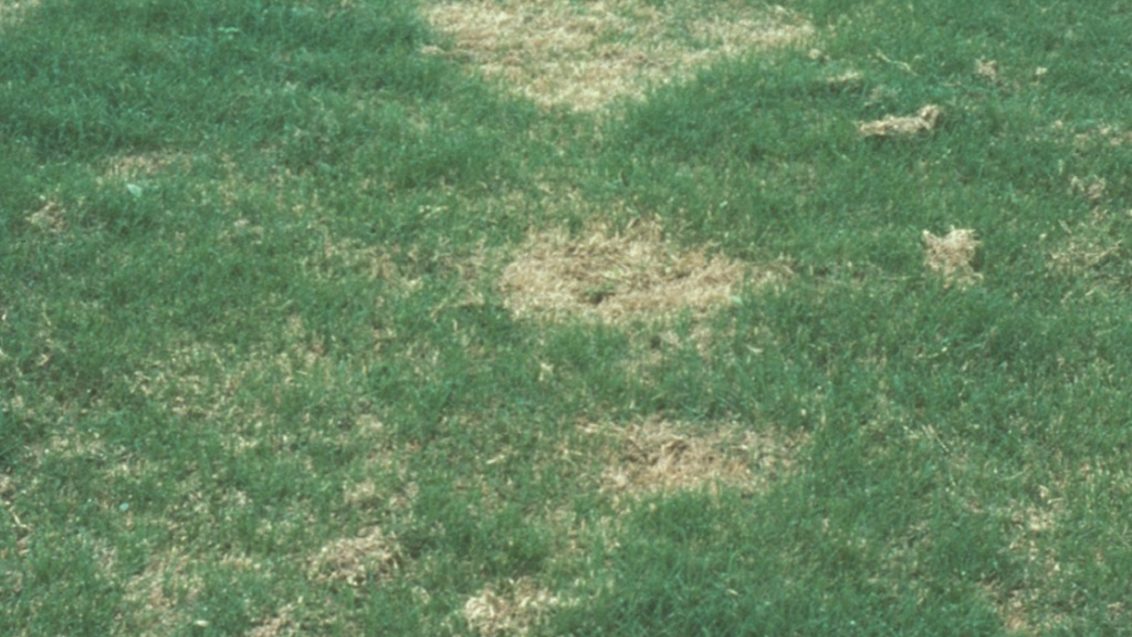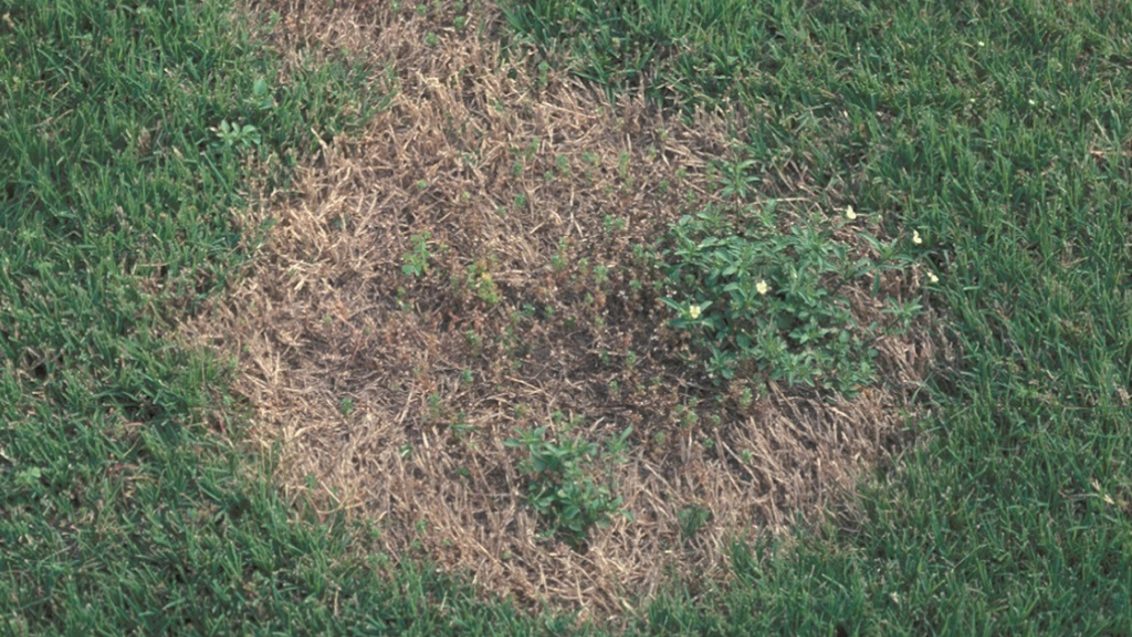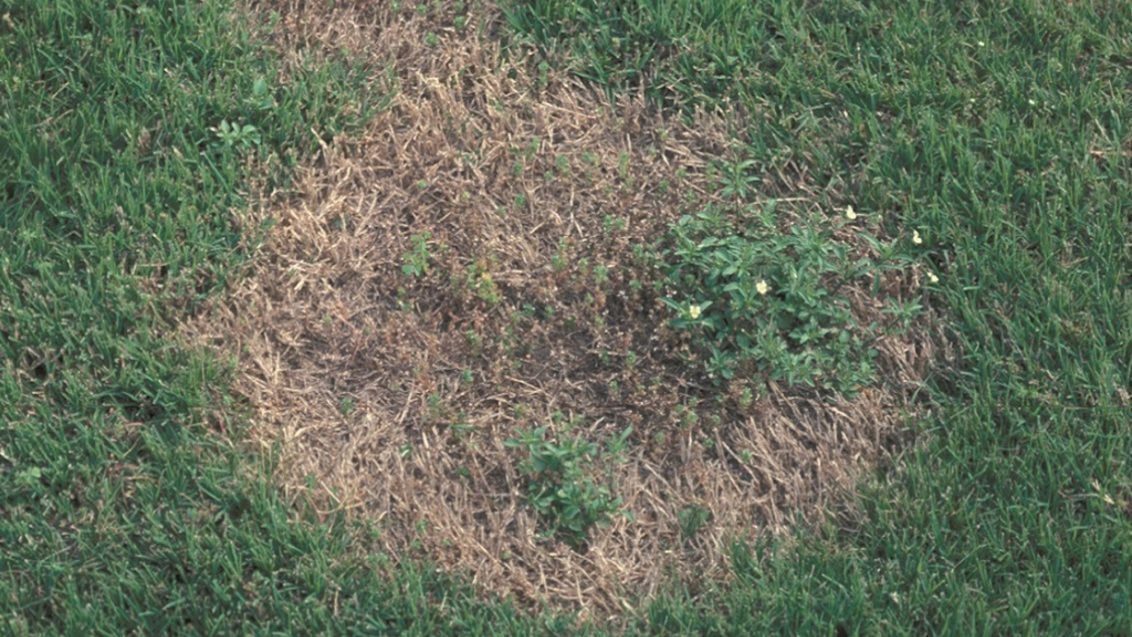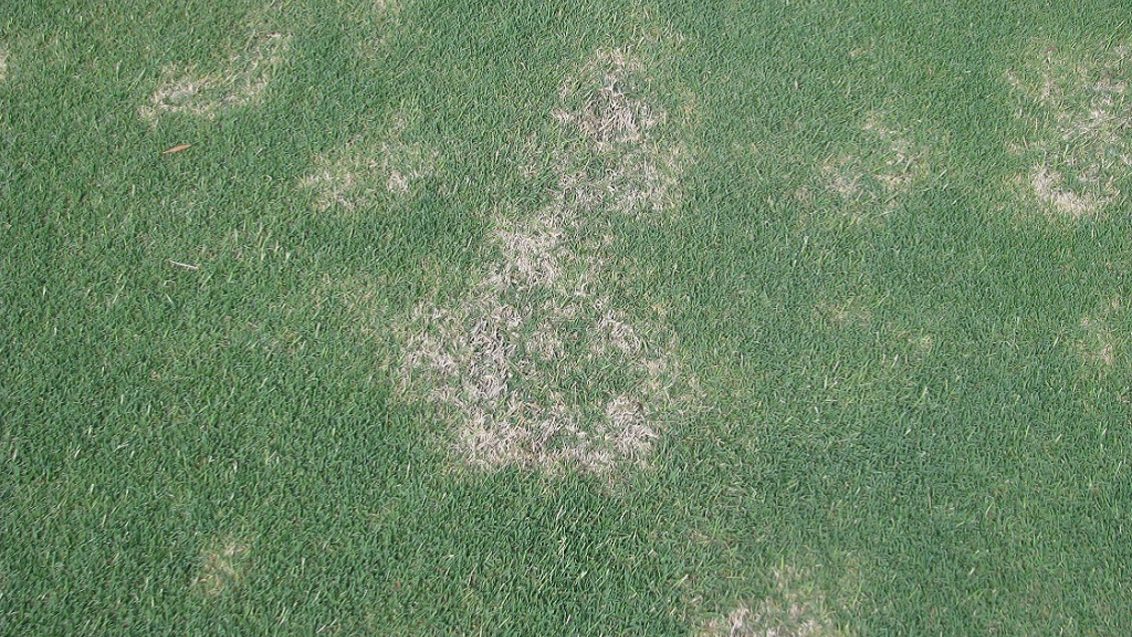Spring Dead Spot
Turf Disease
Susceptible turfgrass: Bermudagrass, buffalo grass and kikuyu grass
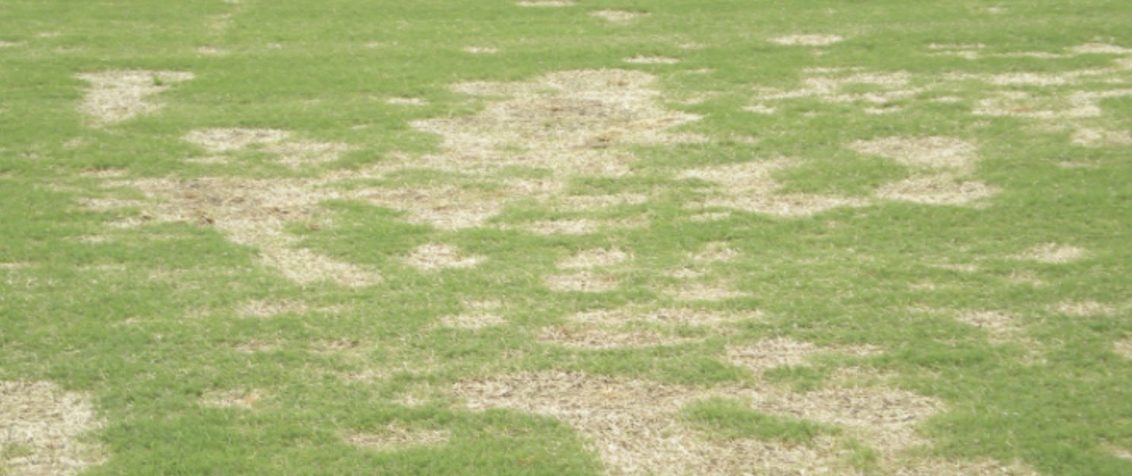
Symptoms:
Infected Bermudagrass and kikuyu grass shows disease symptoms as it emerges from winter dormancy. Spring dead spot appears as bleached, straw-coloured, circular patches that measure up to several feet in diameter. The roots of affected plants turn dark brown to black.
Conditions favouring disease:
Spring dead spot favours cool, wet weather in the spring and autumn and daily temperatures of less than 16°C in May. This disease is typically found where thatch is more than 1.2 cm thick and in locations with poor drainage and low potash levels. Heavy applications of nitrogen in late Summer often increase disease severity the following spring. Spring dead spot is more severe on Bermuda grass that is over three years old and in locations with long dormancy and cold temperatures.
Integrated turf management:
• Avoid late summer or autumn applications of nitrogen fertilisers which may enhance disease severity.
• Use ammonium sources of nitrogen combined with potassium for fertiliser from spring through early August.
• Control weeds in affected turf to enhance recovery from Spring dead spot.
• Apply moderate to high levels of phosphorous, potash, and minor elements.
• Improve drainage of turf.
• Reduce thatch.
• Convert from common varieties to hybrid Bermuda grass with good winter hardiness.
• Use preventive fungicide applications in late September or October.
Fungicidal control
Banner and Heritage

